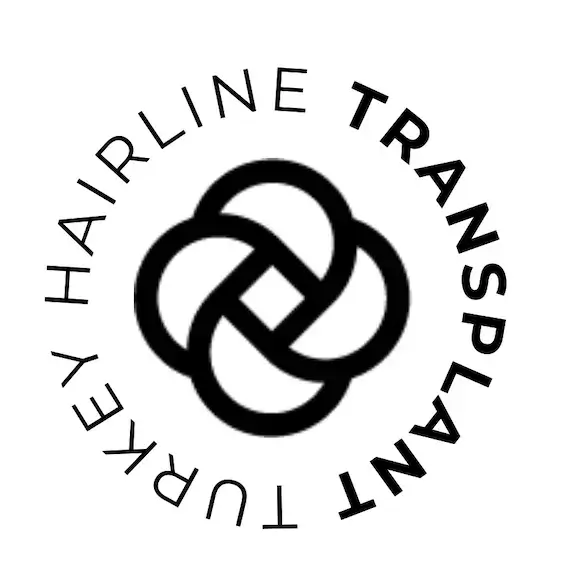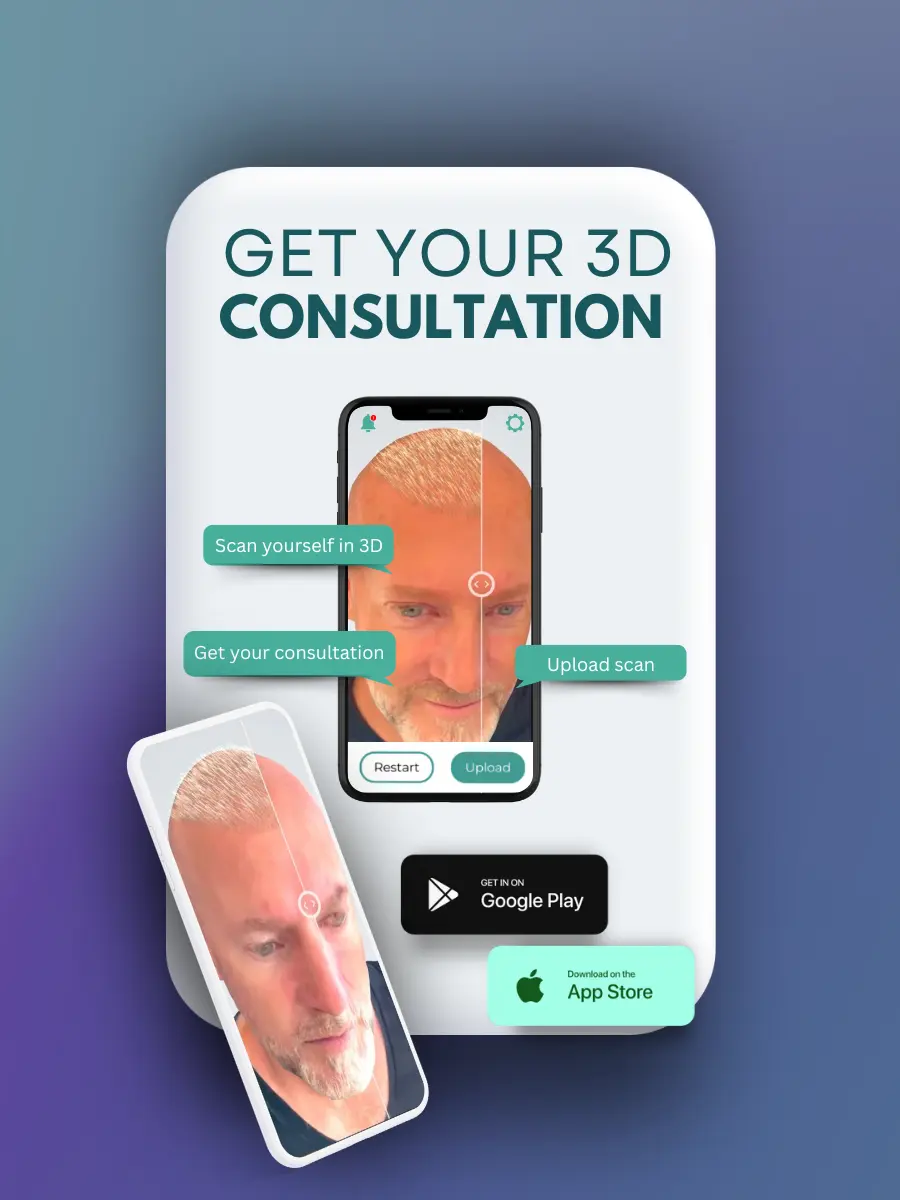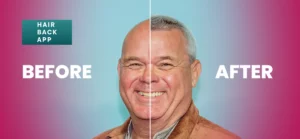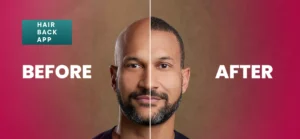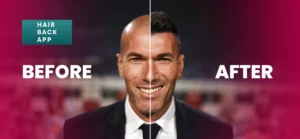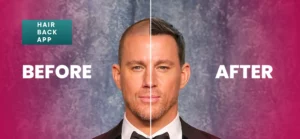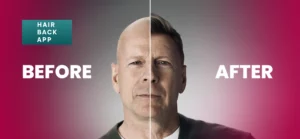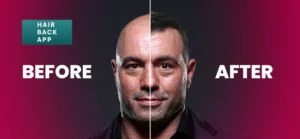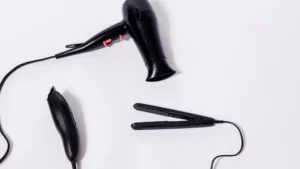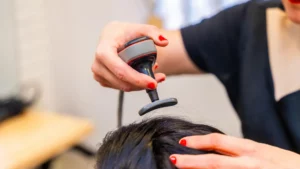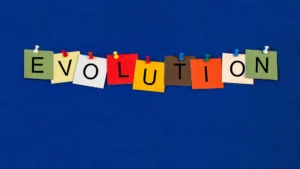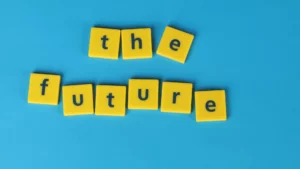Hair regrowth for a receding hairline is a pressing concern for many individuals facing the early signs of hair loss. A receding hairline can significantly impact one’s confidence and self-esteem. This is because it is difficult to hide receding hairline.
My name is Emma Wright, a hair loss and hair transplant research specialist. I am dedicated to providing you with accurate, insightful, and practical information to help you navigate your hair restoration journey. My expertise ensures that you receive the most up-to-date and reliable advice on managing hair loss and exploring hair regrowth solutions.
This article aims to educate and inform readers about effective solutions for addressing a receding hairline, offering a comprehensive overview of various treatments, natural remedies, and preventive measures.
Understanding Receding Hairline
A receding hairline is characterized by the gradual loss of hair at the front of the scalp, leading to a more pronounced forehead and a typical “M” shape. This condition can affect both men and women, though it is more common in men.
Several factors contribute to a receding hairline, including genetics, hormonal changes, aging, and lifestyle choices.
Causes of Receding Hairline
A receding hairline can stem from various factors, often interrelated. Understanding these causes can help in identifying the best preventive measures and treatments.
Genetics
Hereditary hair loss, also known as androgenetic alopecia, is the most common cause of a receding hairline. This genetic predisposition means that if your family has a history of hair loss, you are more likely to experience it as well.
The genetic link affects both the sensitivity of hair follicles to dihydrotestosterone (DHT) and the overall pattern of hair thinning. Genetic factors can determine how early and how severely hair loss will occur.
Hormonal Changes
Fluctuations in hormones, particularly dihydrotestosterone (DHT), play a significant role in hair follicle health. DHT, a derivative of testosterone, can bind to receptors in hair follicles, leading to their miniaturization and eventual dormancy.
Hormonal imbalances during different life stages, such as puberty, pregnancy, menopause, or conditions like polycystic ovary syndrome (PCOS), can exacerbate hair loss. In men, higher levels of DHT are commonly linked to male pattern baldness, while women might experience thinning hair due to hormonal changes related to menopause or pregnancy.
Aging
Natural aging processes can cause hair follicles to shrink and produce thinner hair strands. As we age, the hair growth cycle shortens, leading to shorter, finer hair. The reduced production of collagen and elastin, essential proteins for hair and skin health, can also contribute to weaker hair strands. Aging can also slow down the rate at which hair follicles produce new hair, leading to noticeable thinning and a receding hairline over time.

Lifestyle Factors
Several lifestyle factors can accelerate hair loss and contribute to a receding hairline:
- Stress: Chronic stress can trigger hair loss conditions such as telogen effluvium, where hair prematurely enters the resting phase and falls out. Stress impacts the body’s hormonal balance, which in turn affects hair growth cycles.
- Poor Diet: A diet lacking in essential nutrients, such as iron, zinc, vitamins A, D, and E, and protein, can weaken hair and make it more prone to falling out. Iron deficiency, in particular, is a common cause of hair thinning in women.
- Unhealthy Hair Care Practices: Frequent use of harsh hair treatments, excessive use of heat styling tools, and chemical-laden hair products can damage hair follicles. Traction alopecia results from hairstyles that pull on the scalp, such as tight ponytails, braids, or hair extensions. Repeated tension can damage hair follicles, leading to permanent hair loss if not addressed.
- Environmental Factors: Exposure to pollutants, harsh weather conditions, and ultraviolet (UV) radiation can weaken hair and lead to hair loss. Protecting your hair from the sun and pollutants can help maintain its health and reduce the risk of a receding hairline.
- Smoking and Alcohol Consumption: Both smoking and excessive alcohol intake can negatively affect hair health. Smoking reduces blood circulation to the hair follicles, depriving them of essential nutrients, while alcohol can lead to dehydration and nutritional deficiencies that impact hair growth.
By understanding these causes, individuals can take proactive steps to address and mitigate the factors contributing to their receding hairline. Whether through lifestyle changes, proper hair care, or seeking professional treatments, managing these causes is key to promoting healthier hair growth.
Treatments for Receding Hairline
When it comes to treating a receding hairline, several medical and clinical treatments have proven effective.
Medications
- Minoxidil: An over-the-counter topical treatment that stimulates hair growth and slows hair loss. It’s applied directly to the scalp and can be used by both men and women.
For optimal results, consistency is key, and users should be aware that it may take several months to see improvement.
- Finasteride: A prescription oral medication that reduces DHT levels, helping to prevent further hair loss and promote regrowth. Typically prescribed for men, finasteride can be highly effective but may have side effects, so it’s important to discuss these with a healthcare provider.
Hair Transplants
- Follicular Unit Extraction (FUE): A minimally invasive procedure where individual hair follicles are transplanted to thinning areas. Understanding fue hair transplant cost can help in planning the treatment. FUE is popular due to its natural-looking results and shorter recovery time compared to other methods.
- Follicular Unit Transplantation (FUT): Involves removing a strip of scalp and transplanting hair follicles to the receding hairline. FUT can cover larger areas of hair loss in a single session and is generally less expensive than FUE.
Laser Therapy
- Low-Level Laser Therapy (LLLT): Also known as red light therapy, low-level lasers are used to stimulate hair follicles and promote hair regrowth. Devices such as laser combs and anti-hair loss helmets are available for home use, offering a convenient way to incorporate this treatment into your routine.
Platelet-Rich Plasma (PRP)
- PRP Therapy: Involves injecting platelet-rich plasma into the scalp to stimulate hair growth and improve hair density. PRP is derived from the patient’s own blood, making it a natural option with minimal risk of adverse reactions. It’s often used in conjunction with other treatments for enhanced results.
Natural Remedies for Receding Hairline
For those seeking natural remedies, several options can help promote hair regrowth and improve hair health.
Essential Oils
- Rosemary Oil: Known for its ability to improve circulation and promote hair growth. Mix a few drops of rosemary oil with a carrier oil like coconut or jojoba oil and massage it into your scalp. Leave it on for at least 30 minutes before washing it out.
- Peppermint Oil: Stimulates hair follicles and increases blood flow to the scalp. Use it similarly by mixing with a carrier oil and applying it to the scalp. Peppermint oil also has a refreshing scent and a cooling effect, which can relieve scalp irritation.
Herbal Supplements
- Saw Palmetto: A natural DHT blocker that can help prevent hair loss. Available in supplement form, it can be taken daily. Some studies suggest that saw palmetto can be as effective as finasteride in reducing hair loss.
- Biotin: A vitamin that supports hair health and strength. Found in foods like eggs, nuts, and leafy greens, or as a dietary supplement, biotin can help strengthen hair and promote growth.
Diet and Lifestyle
- Healthy Diet: Consuming a diet rich in vitamins and minerals, such as iron, zinc, and vitamin D, can support hair health. Include foods like salmon, spinach, and nuts. A balanced diet can improve overall health, which in turn supports healthy hair growth.
- Stress Management: Reducing stress through activities like yoga and meditation can prevent stress-related hair loss. Chronic stress can lead to conditions like telogen effluvium, where hair prematurely enters the shedding phase. Practice mindfulness and engage in regular physical activity to manage stress levels.
Best Products for Hair Regrowth
Choosing the right products can make a significant difference in managing a receding hairline.
Shampoos
- Anti-DHT Shampoos: Formulated to reduce DHT levels on the scalp, preventing further hair loss. Look for ingredients like ketoconazole and saw palmetto. These shampoos can be an easy addition to your daily routine and are often recommended alongside other treatments.
- Nourishing Shampoos: Enriched with vitamins and essential oils to support hair health. Ingredients like biotin and vitamin E are beneficial. These shampoos can help strengthen existing hair and prevent breakage.
Serums
- Growth Serums: Containing ingredients like minoxidil and peptides to promote hair regrowth. Apply daily to the scalp for best results. Growth serums are designed to penetrate the scalp and stimulate hair follicles directly.
- Scalp Treatments: Designed to improve scalp health and stimulate hair follicles. Products with ingredients like tea tree oil can help soothe the scalp and reduce inflammation, which can contribute to hair loss.
Supplements
- Hair Growth Vitamins: Including biotin, vitamin E, and other essential nutrients for hair health. Taking these regularly can support hair regrowth. Supplements can be particularly useful if your diet lacks certain nutrients essential for hair growth.
- Herbal Supplements: Such as saw palmetto for hair loss prevention. These can be taken in capsule form or as part of a balanced diet. Herbal supplements can provide a natural alternative or complement to traditional treatments.
Preventing Hair Loss
Preventing further hair loss is crucial in managing a receding hairline. Here are some effective tips and strategies:
Healthy Hair Care Routines
- Gentle Washing: Avoid harsh shampoos and excessive washing to prevent scalp irritation. Use mild shampoos and wash your hair no more than three times a week. Over-washing can strip the scalp of natural oils, leading to dryness and breakage.
- Conditioning: Regularly condition your hair to keep it moisturized and prevent breakage. Use a conditioner suited for your hair type and focus on the ends of your hair. Deep conditioning treatments can also help restore moisture and improve hair texture.
Avoid Damaging Practices
- Heat Styling: Limit the use of heat styling tools that can damage hair. When using tools like hair dryers or straighteners, use the lowest heat setting and apply a heat protectant spray. Excessive heat can weaken hair strands and lead to breakage.
- Tight Hairstyles: Avoid tight hairstyles that cause traction alopecia, a condition resulting from excessive pulling on hair. Opt for loose styles and avoid hair ties that pull on the scalp. If you must tie your hair, use soft, fabric-covered hair ties.
Lifestyle Adjustments
- Balanced Diet: Ensure your diet includes all essential nutrients to support hair health. Foods rich in protein, iron, and vitamins are particularly beneficial. Protein is the building block of hair, while iron helps deliver oxygen to hair follicles.
- Stress Reduction: Engage in stress-relieving activities to prevent stress-induced hair loss. Techniques like deep breathing exercises and hobbies can help manage stress levels. Chronic stress can disrupt the hair growth cycle, leading to increased shedding.
Conclusion
Addressing hair regrowth for a receding hairline requires a multifaceted approach, including medical treatments, natural remedies, and preventive measures. By understanding the causes and exploring various solutions, individuals can effectively manage their hair loss and achieve a healthier, fuller hairline.
Consulting with a professional can provide personalized advice and treatment plans tailored to individual needs.For personalized advice and treatment options, consulting with a professional is highly recommended.
